Researcher Joseph von Fraunhofer, born in 1787, brought us closer to the stars. Counted as one of the founders of modern optics, he succeeded in manufacturing telescopes in a quality that had never been seen before. In 1814, he made his most significant discovery, which was then named after him – Fraunhofer lines. These make it possible for us to get a closer look at space and to understand how stars are born.
Joseph von Fraunhofer
Fraunhofer lines
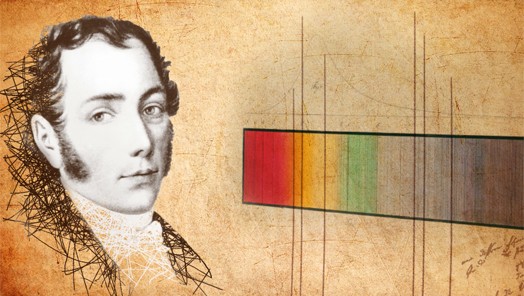
This is a modal window.
Researcher Joseph von Fraunhofer, born in 1787, brought us closer to the stars. Counted as one of the founders of modern optics, he succeeded in manufacturing telescopes in a quality that had never been seen before. In 1814, he made his most significant discovery, which was then named after him – Fraunhofer lines. These make it possible for us to get a closer look at space and to understand how stars are born.
Tabbed contents
Joseph von Fraunhofer
Joseph von Fraunhofer
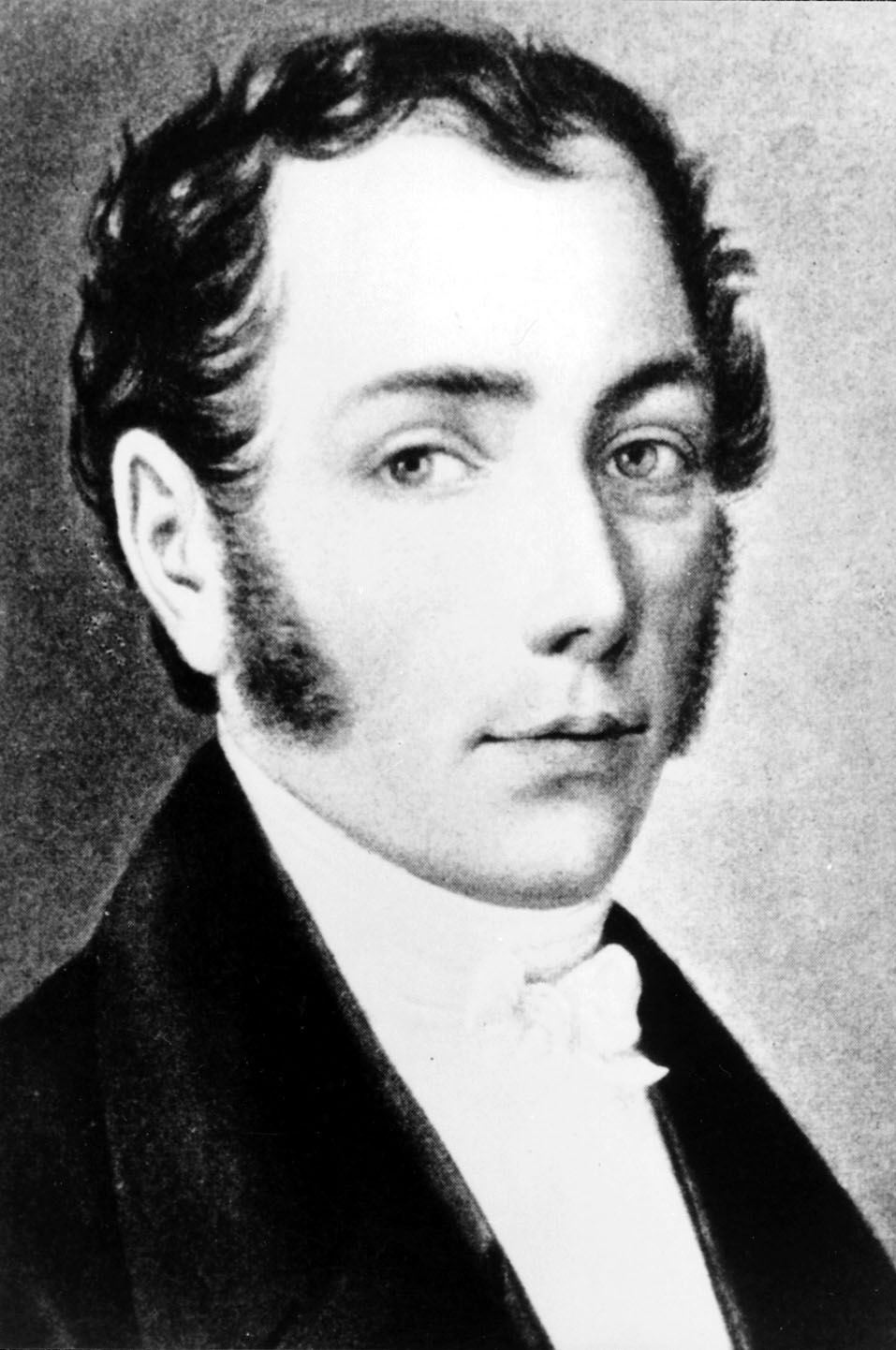
The organization takes its name from Joseph von Fraunhofer (1787-1826), the illustrious Munich researcher, inventor and entrepreneur.
Born of a family of modest means, Joseph von Fraunhofer was a glass-grinding apprentice when discovered by the privy counsellor Joseph von Utzschneider. He took up employ in the latter's Optical Institute and, at the age of 22, became the director of glass manufacturing. He was responsible for the development of new methods of glass production and processing.
The optical instruments he himself developed, including the spectrometer and the diffraction grid, allowed Fraunhofer to conduct fundamental research in the fields of light and optics. He was the first to measure the spectrum of sunlight and characterize the dark absorption strips it contains: the »Fraunhofer lines«. His independent, autodidactic work won him great acclaim from industry and government. The former apprentice became a full member of the Bavarian Academy of Sciences.
Fraunhofer Lines
Researcher Joseph von Fraunhofer, born in 1787, brought us closer to the stars. Counted as one of the founders of modern optics, he succeeded in manufacturing telescopes in a quality that had never been seen before. In 1814, he made his most significant discovery, which was then named after him – Fraunhofer lines. These make it possible for us to get a closer look at space and to understand how stars are born.
Anyone trying to get a grasp of optics will soon come across Fraunhofer absorption lines in the solar spectrum. Joseph von Fraunhofer was the first person to systematically examine, measure and publish about these lines, and they provided him with an objective standard for developing and testing optical glass. Today they play a major role in many areas including space research – they reveal not only the chemical composition and temperature of the gas atmospheres of stars, but also how far away stars are and how fast they are traveling.
Using a prism to break sunlight into its spectral colors produces a rainbow. Around 1814, Fraunhofer started to investigate this phenomenon using a spectrometer of his own invention and in the process discovered 574 dark lines among the luminescent areas of color. English scientist William Hyde Wollaston had observed these dark lines a few years before, around 1802. But it was Fraunhofer who first recognized that they were an inherent property of sunlight and not some random phenomenon. He went on to measure and document the lines with remarkable precision. They proved to be the key to the success of his research activities, since they gave him an objective standard with which to measure the refraction of different types of glass. Precise knowledge about this property of each type of glass made it possible to achieve consistent quality in the manufacture of raw glass, which in turn was used to make the best lenses of that time.
Around 1860, Robert Wilhelm Bunsen and Gustav Kirchhof were developing spectral analysis and discovered how Fraunhofer lines come about. They realized that different chemical elements produced different colors of flame when burned, and that the dark lines appear when chemical elements absorb, or swallow up, light of a certain wavelength. As a result, the light is absent at that point in the color range and a dark line is visible in the spectrometer. Each chemical element leaves behind a characteristic “fingerprint” in the way these dark lines are arranged in the color spectrum, resembling a barcode. Looking at a sample of these lines, you can see which elements make up whatever matter the light has passed through. Since our understanding of space is based almost entirely on the analysis of light from celestial bodies, this discovery was a milestone in astronomy. We have now identified some 25,000 absorption lines in the solar spectrum. Fraunhofer lines became a fixed part of describing the physical world and have played a major role in the evolution of spectral analysis and astrophysics.
His Life
His Life
Joseph von Fraunhofer - from apprentice to scientist of renown
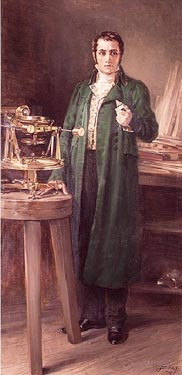
At the beginning of his career, there was little sign that Fraunhofer would achieve immense success. Born in 1787, he lost both parents when twelve years of age. Endowed with insufficient physical strength to become a wood turner, as he had hoped, he then followed in his father´s footsteps and became an apprentice glassmaker. The masterglassmaker who took him on, however, Philipp Anton Weichselberger, did not allow the young Fraunhofer to attend school on vacation days or to read the books he so yearned to devour.
It thus came to a turn of fate to impel Fraunhofer on his career. When Weichselberger`s house collapsed in 1801, Fraunhofer was rescued from the ruins after many hours. This brought him to the notice of Prince Elector Max IV Joseph, and into contact with the entrepreneur Joseph von Utzschneider. Consequently, Fraunhofer`s opportunities of personal development took substantial leap. He was allowed to attend school, received instruction in the craft of lens-grinding and was soon recommended to take up employ as an optician at the workshop of the renowned inventor and designer Georg von Reichenbach, in which Utzschneider was a partner.
Fraunhofer`s talent and determination were immediatly evident. Reichenbach and Utzschneider thus appointed him - when only 22 years of age - head of the glass factory in Benediktbeuern, which belonged to the company. His work on the development of new types of glass, decisive improvements in glass production, and perfectioning of the manufacture of optical instruments brought about impressive results. Fraunhofer implemented standardized production methods, substantially extended the workshop´s product range, and thereby boosted the company´s commercial success. Its products included telescopes, binoculars, microscopes, magnifying glasses and extending astronomical telescopes in hitherto unparalleled quality. Fraunhofer´s instruments were sold and put to use throughout Europe.
These instruments he himself developed, moreover, proved themselves indispensable to his own pioneering scientific work. His spectrometer allowed him to investigate sunlight and other sources of light with extraordinary precision; the optical gratings he constructed made it possible to analyze the phenomenon of diffraction and describe its effects on the manufacture of optical instruments.
Fraunhofer achieved national and international fame and won many honors for his unmatched optical instruments and scientific accomplishments. Leading scientists and politicians of the time visited him at his place of work. These notables included the physicist Carl Friedrich Gauss, Max I Joseph, King of Bavaria, and - it is widely believed - the Czar of Russia, Alexander I.
As a result of his scientific renown, against initial resistance on the part of established scientists, Fraunhofer was elected a full member of the Academy of Sciences. The King of Bavaria made him a Knight of the Order of Civilian Service, thus raising him in status to one of the nobility. Joseph von Fraunhofer died of tuberculosis in 1826, at the age of 39.
His Achievements
His achievements
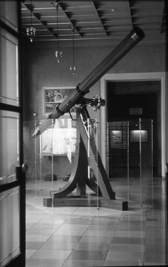
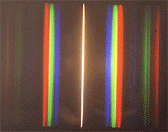
Fraunhofer is regarded as the founder of the scientific method in the sphere of optics and precision mechanics, as the first German exponent of precision optics, and at the same time as a successful entrepreneur.
After joining the Mathematical-Mechanical Institute with its glassworks in Benediktbeuern - the company owned by Reichenbach and Utzschneider - Fraunhofer concentrated his efforts first of all on improvements to the quality of glass. He conducted precisely documented experiments with altered raw materials and modified melting processes, thus enabling the manufacture of glass without streaks. At the same time, he implemented standards in the processing of finished glass - an absolute innovation at the time - and thereby made the final result independent of the respective skill of the individual lens-grinder.
His precise knowledge on the diffraction characteristics and color dispersion of different types of glass helped Fraunhofer to design exceptionally large achromatic telescopes. This led to a completely new generation of astronomic refraction instruments. They employed lens diameters and generated images of a quality hitherto considered impossible. The optical quality of these telescopes remained unsurpassed for many decades to follow, and enabled dramatic new astronomical discoveries. The astronomer and mathematician Friedrich Wilhelm Bessel, for example, succeeded for the first time in 1838 with the help of the Fraunhofer heliometer to determine a fixed-star parallax. Fraunhofer´s most famous instrument is the parallactic assembled refractor he constructed for the Imperial Russian Observatory in Dorpat. With the identical 9-inch refractor on exhibit today in the Deutsches Museum in Munich, the astronomer Johann Gottfried Galle succeeded in discovering the planet Neptune in 1846.
The new optical instruments developed by Fraunhofer were also of crucial significance in his own research work. Prisms which he made allowed him to investigate the spectrum of visible light. Other scientists before him had already noted dark strips in the spectrum of sunlight, but it was now Fraunhofer who first ascertained that these strips - known today as Fraunhofer lines - were an inherent property of sunlight. His fundamental research work on the spectral composition of light from various sources made Fraunhofer one of the founding fathers of modern spectral analysis.
Fraunhofer`s studies of the diffraction of light represented a further milestone in his scientific career. Using a diamond, he constructed a diffraction grating with grooves spaced only 0.003 millimeters apart. This enabled him to measure the wavelength of light in various colors with extraordinary precision.
Scientific research and practical applications were mutal stimuli in all of Fraunhofer´s work. The discovery and descriptive analysis of the absorption lines in the spectrum of sunlight, for example, allowed exact ascertainment of the diffraction characteristics of individual varieties of glass. Analysis of diffraction was of immediate practical value in the construction of improved telescopes. Fraunhofer was able to utilize the insights that he gained through experiment in the form of products and processes. The advances he achieved in the manufacture of optical instruments at the same time laid the basis for renewed success in his scientific research. In this way, Joseph von Fraunhofer was one of the true founders of modern application-oriented research.
His Legacy
His Legacy
Optics in science and technology today
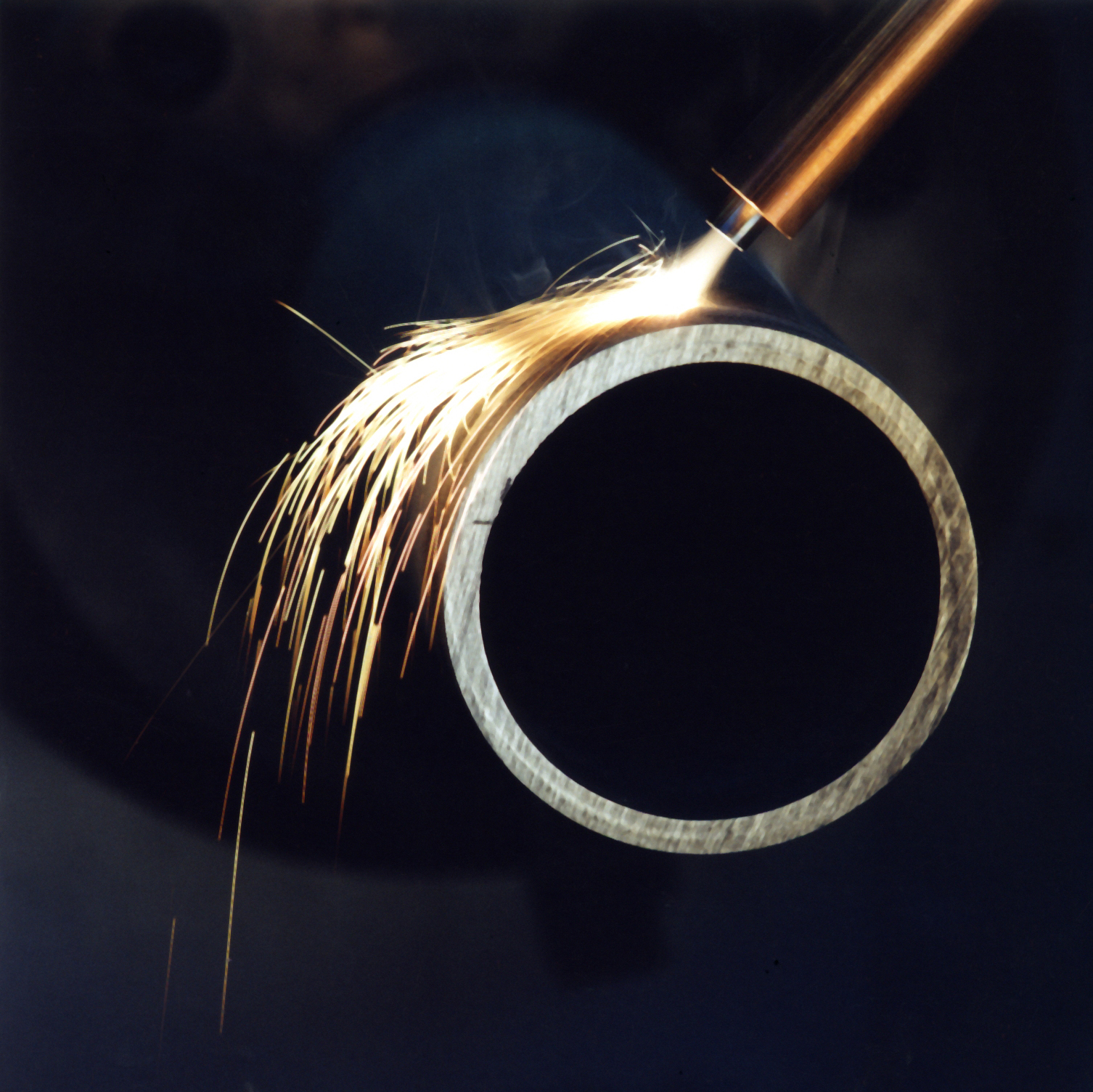
Joseph von Fraunhofer has had a lasting influence on optics with his fundamental and systematic research. His accomplishments are still of great relevance today, since optical systems are widespread and crucial part of our modern world.
This is most clearly apparent in the sphere of information and communications technology. Data transmission via glass fiber represents a vast improvement in performance over the earlier cables made of copper, and a great deal more information can be stored and accessed on optical CDs using lasers than on or in any other medium. The development of the Internet shows that the volume of data transfer taking place every day is constantly increasing, and in future will only be manageable with the help of optical systems of transmission and storage. Even today´s level of media consumption has only become possible through the use of optical data systems.
Light has become a universal tool in science and technology. When concentrated in the form of laser beam, it can be used to process materials and components. Powerful laser genertators allow several meters of sheet steel to be cut per second; the suitability of laser beams to high-precision control, on the other hand, facilitates their use for storage of data or laser printing.
Optical processes are playing an ever-greater role in measurement technology. With the help of lasers, even the tiniest impurities in the atmosphere several kilometers above the Earth can be detected and diagnosed. Spectral analysis, of which Joseph von Fraunhofer laid the technical foundations, is now a standard procedure in modern laboratory work.
In microelectronics, too, another key technology, optics play an essential part. Integrated circuits involve the exposure of photosentive materials to light prior to their chemical processing. The transmission of electrical and optical signals is a crucial development area in the field of modern microsystems.
Many modern medical practices would no longer be conceivable without optical systems. In surgery, lasers are finding ever-greater favor, and advanced optical endoscopes are essential instruments in minimally invasive surgery. Micro-optical analysis devices no larger than a wrist watch allow permanent monitoring of a patient´s physiological data.
Innovative sources of light give a new dimension to optical technology. Light-emitting diodes and diode lasers are now set to supplant conventional light bulbs; their applications include monitor screens, light signals, and lighting for rooms and vehicle interiors. With their long life, low price and reduced energy consumption, these new sources of light are certain to accomplish a breakthrough before long.
Joseph von Fraunhofer´s legacy lives on. He gave a decisive stimulus to optical developments continuing apace to this day.
Time Line
Time Line
6. März 1787 |
Joseph Fraunhofer is born, the eleventh child of Franz Xaver and Anna Maria Fraunhofer in Straubing, Lower Bavaria. |
1799–1804 |
The young Fraunhofer completes an apprenticeship with the mirror maker and decorative glass cutter Philipp Anton Weichselberger in Munich. |
1801 |
Weichselberger`s house collapses; Fraunhofer is buried among the ruins. During the rescue work he comes into contact with the privy councilor Joseph von Utzschneider and prince-elector Maximilian IV Joseph. |
1804-1806 |
Fraunhoferworks as an assistant to Weichselberger. |
1806 |
Fraunhofer becomes an optician at the Mathematical-Mechanical Institute run by Reichenbach, Utzschneider and Liebherr in Munich. |
1808 |
Fraunhofer works as a glass grinder in the Benediktbeuern glassworks, part of the Mathematical-Mechanical Institute; he publishes his first scholarly essay. |
1809 |
Apart from melting the glass, Fraunhofer is responsible for the entire glass production process in Benediktbeuern. |
1811 |
Fraunhofer takes over as overall head of the glassworks of the Mathematical-Mechanical Institute in Benediktbeuern. |
1814 |
Fraunhofer takes over as overall head of the glassworks of the Mathematical-Mechanical Institute in Benediktbeuern. |
1817 |
The Royal Bavarian Academy of Sciences names Fraunhofer a corresponding member. |
1819 |
Mathematical-Mechanical Institute moves to Munich. |
1821 |
After some heated debate surrounding his lack of academic training, Fraunhofer is appointed extraordinary visiting member of the Royal Bavarian Academy of Sciences. |
1822 |
University of Erlangen awards Fraunhofer an honorary doctorate. |
1823 |
Fraunhofer becomes titular professor and curator of the physics collection at the Royal Bavarian Academy of Sciences. |
1824 |
King Max I Joseph names Fraunhofer Knight of the Order of Civil Service of the Bavarian Crown, enabling him to join the ranks of the nobility. |
7. Juni 1826 |
Joseph von Fraunhofer dies in Munich. |


